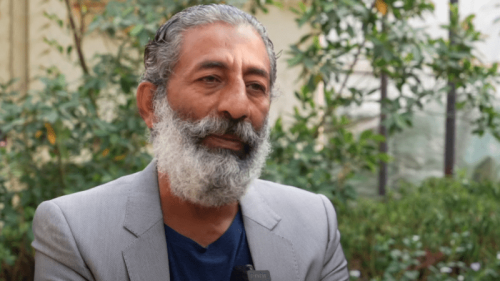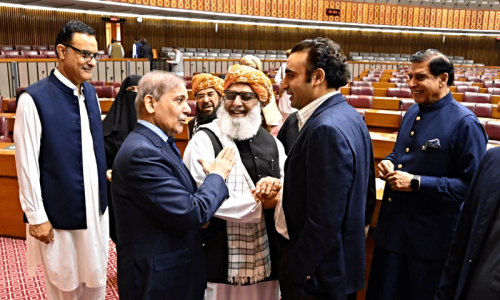Pakistan still ahead of India in arms race

WASHINGTON: An infographic created by the Bulletin of Atomic Scientists reveals that Pakistan is ahead of India in the nuclear arms race by 10 atomic weapons. While India has 110 atomic weapons, Pakistan possesses 120.
The infographic illustrates the history of nuclear arms procurement and testing in both countries since they first tested nuclear weapons just three weeks apart in 1998.
According to the Nuclear Notebook, the testing of nuclear weapons for the very first time by both countries in the late nineties displayed a failure on the part of the international community to fully commit itself to the regulation and control of atomic weapons ─ despite a general global trend towards the non-proliferation of these weapons.
The nuclear disarmament movement started gaining momentum in 1987, at which time the United States and Soviet Union had signed the Intermediate-Range Nuclear Forces Treaty prohibiting the procurement and deployment of intermediate and shorter-range nuclear weapons with ranges between 500 and 5,500 km.
However, in 1998 when Pakistan and India both tested their first nuclear weapons, the United States (US) and Soviet Union were still poor role models as both were in possession of 10,732 and 14,368 weapons respectively at the time.
The poor adherence to non-proliferation treaties is evident when one recalls that the United Nations Office for Disarmament Affairs (UNODA) started taking notice of issues related to atomic energy in 1946, passing the First GA Resolution. The International Atomic Energy Agency (IAEA) was formed in 1957 to "ensure safe, secure and peaceful uses of nuclear science and technology", according to UNODA.
The multilateral Treaty on the Non-Proliferation of Nuclear Weapons entered into force on Mar 5, 1970 and was followed by the Partial Test Ban Treaty (1963) and the Comprehensive Nuclear-Test-Ban Treaty (1996), the latter of which has yet to be implemented despite being signed in the mid-nineties.
The global proliferation of warhead stockpiles, however, showed an increasing trend up until 1986 when global stockpiles rivalled 64,099 weapons. The US and Soviet Union were in possession of 23,317 and 40,159 warheads respectively.
Pakistan has, since 2002, remained at least 10 weapons ahead of India in the arms race. The last time Pakistan’s arms rivaled or were less than those possessed by India was in 1999 when both countries owned eight atomic weapons each.
In the wake of the Sept 11, 2001 terrorist attacks, the US displayed a renewed zeal to own weapons intended for deeply buried and hardened targets and announced its withdrawal from the Anti-Ballistic Missile Treaty. However, despite these proclamations, the number of nuclear arms in the United States dropped sharply in 2004, 2006 and 2007, and has displayed a downward trend over the course of the past decade.
A New Strategic Arms Reduction Treaty was signed by the US and the Russia in 2010 as a follow up to START I and START II (signed 1991 and 1993, respectively). After ratification, it was put into force in 2011.
The pact commits their nations to slash the number of strategic nuclear warheads by one-third and more than halve the number of missiles, submarines and bombers carrying them. According to then-Secretary of State Hillary Clinton, the agreement would “enhance international stability".
However, Pakistan and India show no signs of slowing down their acquisition of atomic weapons despite the insistence of international organisations that they do so.
In February 2015, US experts opined that a terrorist attack in India had potential to turn into a full-blown nuclear war between the two countries.
Earlier this year, during Obama’s visit to India, a nuclear deal signed between the two countries in 2008 ─ which was held up by US concerns over India's strict laws on liability in the event of a nuclear accident ─ has reportedly been put into effect.
Just yesterday, Pakistan successfully test-launched the Shaheen-III ballistic missile ─ the first of its kind to have an impact range of nearly 3,000 km.
Read more: Test launch of Shaheen-III ballistic missile successful: ISPR
As of 2013, the global warhead count stands at 10,144 with the US and Russia leading the count with nearly 5,000 warheads each. North Korea is absent from the list as it has no warheads in its possession.













































